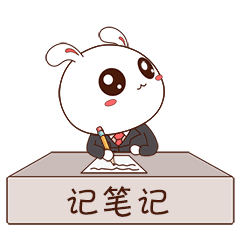((3) Education media: Also known as educational impact, educators’ sum of everything rely on educational activities, including educational content, educational materials, educational methods and organizational forms and educational methods, which are collectively referred to as educational impact.(Education impact is a bridge that educators impact on the educated people)
(The contradiction between the educated and educational content is the logical starting point of education, and it is also the most basic and decisive contradiction in education.
Why should people be educated?
1 is determined by the law of human society, that is,necessityEssenceSocial development needs to convey human social experience, and individuals also need to learn social experience to adapt to society and gain their own development.
2 It is determined by human body and mind characteristics, that is,possibilityEssencePeople have the potential to develop in plasticity and physical and mental development.
saying:
Qumenez: Only after receiving a suitable education can people become a person.
Plato: If he has received real education, he is the most docile and most sacred creature; if he is not educated, or he has been educated, he is the most difficult thing in the world)
Education function classification
(1) According to functional objects, it can be divided into individual development functions and social development functions (the derivative function of education).
(2) According to the direction of function, it can be divided into positive and negative functions.
(3) According to the form of functional effects, it can be divided into explicit function and hidden function (non -expected function of education).
Education origin and development
1. Origin of education
(1) The origin of myth: Education is created by the personality of personality.(This view is wrong, the representative is Zhu Xi)
(2) Origin theory: The first formal education origin theory.It is believed that education comes from animal instincts and is the need for racial development.(This view is wrong, because the failed to distinguish between animal breeding and human education, ignoring the purpose and social nature of education, the representative figures are the “Education Education Education Education Education Education Education Education” and the British Picengneng.Education “))
(3) Psychological origin: Education is a child’s imitation of adults and deny the social attributes of education.(Representative Meng Lu, Lenovo Memory Monroe Monroe, Actor is good at imitation)
(4) Origin of labor: Education originated from human production labor, also known as the origin of society.(This view is criticized for the theory of creatures and psychological origin, formed by Marx’s historical materialism theory)
(5) Origin of communication activities Theory: Education occurs in communication activities, and has the impact of ideological consciousness and emotion in exchanges. Education is a special communication activity.
Development of education
(1) Overview of the development process of education
1. Primitive education
The level of productivity is low, and education penetrates in production and life, simple and rough.Features of primitive education: ① originality ② non -independence ③ equality and popularity, broadness and classlessness
2. Ancient education
The earliest human school appeared in Egypt around 2500 BC.Features of ancient education:
① Generated school education, with specialized educational institutions and full -time educators (teachers)
② The class and grade of education are clear
③ Education is separated from the production of labor
④ Rich in content, backward methods, and the school system is not sound.
Class, hierarchy, autocracy, stereotypes, stereotypes, symbolic, Taoism (heaven, god, humanity, feudal ethics) is a consistent feature of ancient education.
(1) Ancient Chinese Education
① Xia Dai: There are three schools: “代”, “preface” and “school”.
② Shang Dynasty: There are relatively formal school education venues to divide different stages of education: “learning” (college, elementary school), “瞽 瞽”, “庠”, “preface”.
③ Western Zhou: There are “Chinese studies” and “rural studies”, “learning in the government, academic officials, politics and education together”, and the monopoly of the slave -owner class was educated.Book, number.
④ Spring and Autumn and Warring States Period: official learning decline, the rise of private studies, the two influences of Confucian and Mo, and the popularity of adoptives (for example, “His Majesty’s Palace”, also known as His Majesty, and the official institution of Tian Qi during the Warring States Period was foundedQi Gonggong).
⑤ The Western Han Dynasty: Dong Zhongshu proposed “a hundred schools, respected Confucianism alone”, and set up the highest educational institution -Tai Xue.
⑥ Eastern Han: The establishment of Hongdu Gate, specializing in literature and art, local officials call it county, or county and county.
⑦ Wei, Jin, Northern and Southern Dynasties: Establish a county -national school system, and the state of the country is tied with Tai Xue (the Emperor Dianwen of the Northern Wei Dynasty was considered the beginning of the school education system in my country). Museum; Selected scholars adopt nine products.
儒 Sui and Tang dynasties: Revitalizing Confucianism, equal emphasis on the three religions (Confucianism, Tao, Buddha), and the imperial examination system, six studies (Guoxue, Tai Xue, Four Division, Law Studies, Books, and Archives), Second Museum (Chongwen Pavilion, Museum,Hongwen Museum), the purpose of education is to “learn and excel”, and literati are ashamed to the school’s production labor knowledge, and education and production labor isolation.
和 Song Dynasty: The important basis for textbooks and imperial examinations is the four books (“University”, “The Golden Mean”, “The Analects of Confucius”, “Mencius”), and the five classics (“Poetry”, “Book”, “Rites”, “Yi”, “Spring and Autumn”).The academy prevails, the six major academies -Bailudong Academy, Shigu Academy, Yuelu Academy, Yingtianfu Academy, Songyang Academy, Maoshan Academy
In the Ming Dynasty: After the Ming Dynasty, the eight -strand text became a fixed format for the imperial examination.In 1905, the imperial examination system was abolished.
(2) Education of ancient European Europe
① European slave society: Ancient Greece formed Spartan military education (military sports training, political ethics instilling, cultivating powerful soldiers) and Harmony education at Athens (pay attention to the harmonious development of the body and mind, cultivate politicians and businessmen)Education -based, learn Latin rhetoric, and cultivate arguments.
② European feudal society: formed church education and knight education.Seven Arts -Three Section: grammar, rhetoric, dialectics; Four studies: arithmetic, geometry, astronomy, music; Knight Seven Arts -Riding, Swimming, Fighting, Hunting, Driving, Poems, Yin Shi Poetry
③ During the Renaissance: Humanist education is formed, that is, education is centered on “people”.Oppose the theology and the style of the scriptures, which are humanistic, classic, secular, religious, and aristocratic characteristics.(Victorino, Ilasmo, Labere and Mengtian).
(3) Education in ancient India: Fammer Education (mainly family education, monks are teachers, memorized the Vedic Scriptures) and Buddhist education (abandoned enjoyment, pursuing the afterlife).
(4) Education in ancient Egypt: First, there are palace schools and official schools (with officials as teachers, teaching by law, and only nobles and officials of officials to enter school).And “with officials (books) as a teacher”.
3. Modern education
At the end of the 16th to the 19th century, the nationalization of education (the rise of public education) and the obligation of primary education (Germany [Prussia] was the earliest country in the world’s popularity of compulsory education, 1763), the secularization of education, and the legalization of education.
4. Modern education
(1) Lifetime of education (first proposed by French Paul Langelang), all -ity (1990, Thailand’s “Declaration of Education of the World”), Democratic (Educational popularization, equal opportunities and legalization).
(2) Education diversification and modernization (the common pursuit of education in various countries), and humanities education and scientific education are equal to a series of reforms and innovations: diverse school types, education marketization, education network establishment, and innovative teaching forms.
(3) Modern schools first appeared in the 18th century, and modern schools generally implemented a class teaching system (the modernization of teachers is the core of education modernization).
(4) The trend of educating globalization, diversification and localization is obvious, international exchanges and informatization acceleration, and scientific enhancement.
(5) Strengthen preschool education and strengthen the popularization of compulsory education. Ordinary education and vocational education are developing in the direction of mutual penetration. The types of higher education are becoming increasingly diverse.
In short, modern education shows productivity, publicity, scientificity, futuristic, revolutionary, international, and lifelongity.

Want to quickly learn about the content of Shenzhen teachers for testing?
OneGardener Program 3.0Bar!
Lecture+video only costs 9.9 yuan to buy!

